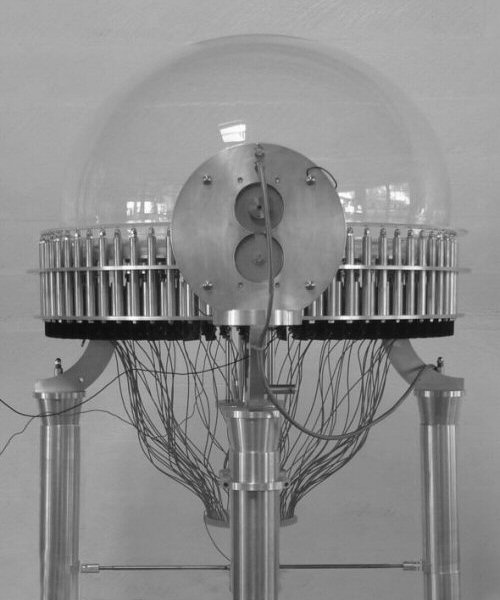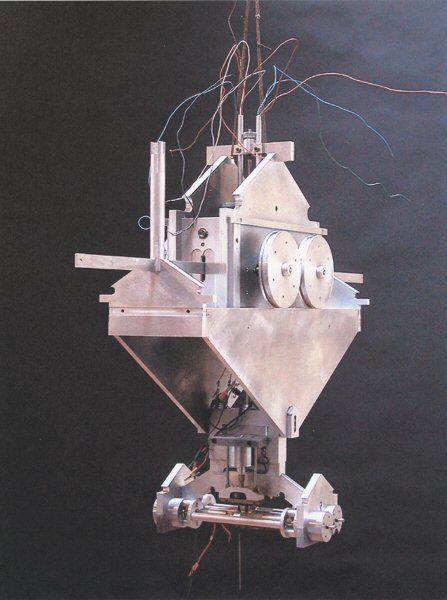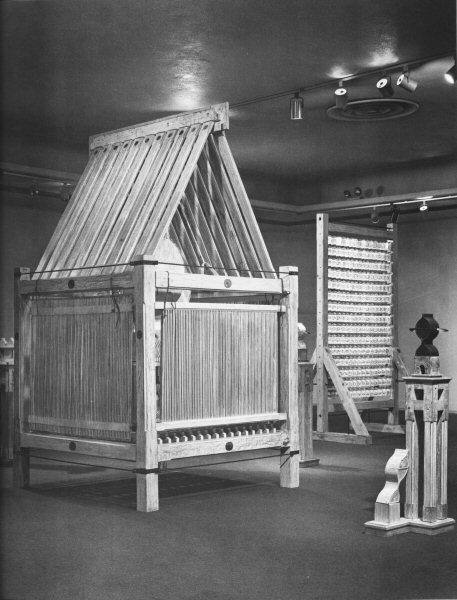Please wait a few moments while we process your request

Geoffrey Smedley
Descartes' Clown: the Roulette
The Foundation has supported the construction of The Roulette, a component of Geoffrey Smedley's sculpture-installation Descartes' Clown.
Descartes' Clown is based on the belief that the human species is an intermediate form leading to a world inhabited by robotic souls. The project is thus concerned with the mechanization of man. Formally, it is a sculptural installation in the mode of the absurd. Inspired by a passage from René Descartes' Discourse on Method (IV, vi, 38) - "How does one know that the thoughts which come in dreams are false, instead of the other way round, given that they are often as vivid and precise?" - the project then drew its force from the unconscious, from Smedley's dreams fragments and a vision of the tomb of the last robot.
Descartes' Clown has three components. The Water Tablet is a moving structure supported by a series of sub-mechanisms, a metaphor for memory and amnesia. The Escapement, like the human heart, has a self-propelling rhythmic pulse; this component represents the connection between time and gravity. The third component, which is being supported by the Foundation, is still at the conception stage:
Descartes' Clown is based on the belief that the human species is an intermediate form leading to a world inhabited by robotic souls. The project is thus concerned with the mechanization of man. Formally, it is a sculptural installation in the mode of the absurd. Inspired by a passage from René Descartes' Discourse on Method (IV, vi, 38) - "How does one know that the thoughts which come in dreams are false, instead of the other way round, given that they are often as vivid and precise?" - the project then drew its force from the unconscious, from Smedley's dreams fragments and a vision of the tomb of the last robot.
Descartes' Clown has three components. The Water Tablet is a moving structure supported by a series of sub-mechanisms, a metaphor for memory and amnesia. The Escapement, like the human heart, has a self-propelling rhythmic pulse; this component represents the connection between time and gravity. The third component, which is being supported by the Foundation, is still at the conception stage:
"The Roulette, or organ of chance and habit, is an analogical machine for playing a modified game of marbles. It is the organ the Clown uses to test the hypothesis of morphic resonance, the transmission of form and behaviour through repetition in time. This is a notion the maverick geneticist Rupert Sheldrake explored, using what C.H. Waddington called chreodes, by which he meant developmental pathways in nature, somewhat akin to the philosophical idea of entelechy (the process of becoming or of being actual); a chreode is a path of potentiality. The hypothesis of morphic resonance proposes, among other things, that entities in nature exhibit fields of form, quite unlike fields of force, and transmit information without the use of energy. The morphogenetic field irradiates likeness. It is a rhyming theory of things. Roughly it amounts to this: the repetition of an event induces the seed of habit, and the likeness of that habit can in turn be transmitted through the fabric of nature..." (1)
Dominique Fontaine © 2004 FDL
(1) Quoted from Geoffrey Smedley's proposal.
Related page:
 Geoffrey Smedley
Geoffrey SmedleyBorn in London, England, Canadian sculptor Geoffrey Smedley studied at the Slade School of Fine Art, University College in London and served in the army from 1945-48 with the Royal Engineers.
External link:
Descartes' Clown:
http://www.geoffreysmedley.com/#!about3/cu...
http://www.geoffreysmedley.com/#!about3/cu...









